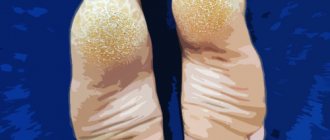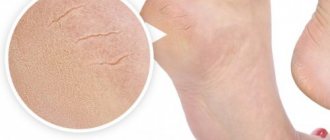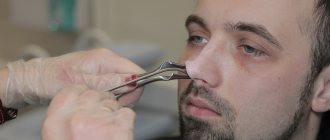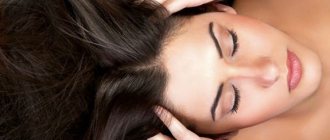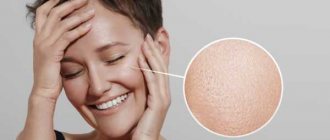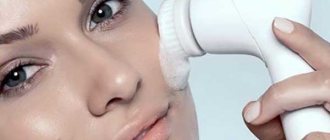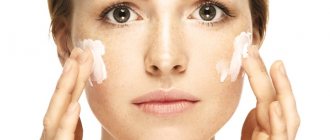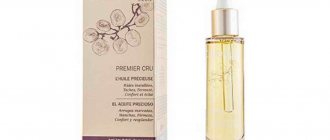Useful tips
Cracks and rough heels are not only an aesthetic problem. This is also quite a serious discomfort: a person experiences pain when walking, and women also have difficulty buying beautiful, open shoes for the summer.
To prevent this from becoming a serious problem over time, the rough layer of skin on the heels must be constantly removed.
In order to get rid of cracks and rough skin on the heels, you need to follow several fairly simple, but at the same time quite effective methods.
Causes of rough skin on feet
Rough and dry skin on the heels is in most cases a cosmetic problem that develops as a result of poor foot care or wearing poor-quality tight shoes. Pathological conditions develop in the following diseases:
- diabetes mellitus;
- lack of vitamins;
- dermatoses of an allergic nature;
- fungal infections of the skin of the feet;
- psoriasis;
- hormonal disorders in women during menopause.
To achieve successful results from foot care, it is necessary to eliminate the likelihood of painful skin conditions. By contacting a dermatologist, a histological examination of the rough skin will be performed.
If a pathology is detected, the doctor will identify the cause and prescribe treatment. While adhering to the doctor’s recommendations, you also need to take careful care of your feet. Without appropriate therapy, rough skin due to diseases will reappear.
If ugly skin on your heels is the result of a careless attitude towards yourself, cleansing procedures will quickly give a good effect. To do this, it is not necessary to go to specialized salons; careful care at home is enough.
Is it possible to prevent the development of dry skin on the heels?
There are simple measures that will help keep the skin on your heels smooth and properly hydrated - even if it is prone to dryness and flaking.
- Try to maintain a drinking regime - drink at least 30 ml of liquid (preferably clean drinking water, not tea or coffee) per 1 kg of body weight.
- Make sure that the diet is complete: it contains all the necessary elements (in particular, vitamins A, E and D), polyunsaturated fatty acids.
- Choose your shoes carefully: avoid uncomfortable lasts, synthetic materials, and refrain from wearing high-heeled shoes frequently.
- Choose cotton socks over synthetic ones and try to avoid walking barefoot - especially if you have abrasions or cracks in your heels.
- Take care of the skin of your feet and heels every day, dry them thoroughly after hygiene procedures and, if possible, refrain from using electric saws, straight razors and other tools that can sand the skin more than necessary.
Today we told you why heels can dry and peel, what to do in this situation, how to care for dry heels and how to moisturize them. We hope that our tips and tricks will help you keep your heels smooth and soft!
Method number 1: hydrogen peroxide
Hydrogen peroxide is an affordable, inexpensive product that can be sold at any pharmacy without a doctor's prescription. It is mainly used to disinfect damaged skin. Antiseptic and exfoliating properties in combination give excellent results when cleaning the skin of the feet.
For a cosmetic procedure, it is necessary to prepare a special solution, which includes 5 tbsp. spoons of 3% hydrogen peroxide and 2 liters of hot water. For ease of use, you can choose rubbing or foot baths.
In any case, before the procedure, it is advisable to steam dry skin on the heels to achieve maximum effect. For rubbing, you can take a cotton pad or cotton cloth and, moisten it in a weak solution of hydrogen peroxide, clean the entire skin of the feet on both legs.
For baths with peroxide, you need to pour the resulting mixture into a clean bowl and place your feet there for 10 minutes. At the end, the skin of the feet is cleaned with a pumice stone or a file, and then lubricated with a rich nourishing cream.
The number of procedures will depend on the condition of the feet; usually the full course can take up to one and a half months. Once every 3 days is the optimal frequency to achieve good results; more intensive use will only dry out the skin.
It is recommended to carry out foot baths in the evening before bed, so that the skin of the feet is nourished and softened at rest for several hours.
Having achieved smooth skin on the feet, the ideal condition must be maintained regularly. The skin of the feet is subject to constant pressure and friction while walking under the weight of its own weight, so it is more vulnerable than other areas of the body.
Hydrogen peroxide will become an indispensable assistant in the fight for healthy heels.
Vitamin deficiency is the cause of cracked heels
A deficiency of certain vitamins in the body often leads to cracks in the feet. For example, a lack of vitamin A can cause excessive dryness of the skin and roughening. As a result, cracks and calluses begin to form. Vitamin E prevents tissue destruction and excessive capillary fragility, and helps normalize metabolism. This makes the skin not only healthy, but also beautiful.
Vitamin F has an anti-inflammatory effect.
It accelerates the regeneration process, promotes the healing of wounds and ulcerative lesions. With a lack of vitamin PP, the body's protective properties are reduced, sometimes this process is accompanied by severe skin itching and peeling.
When the first symptoms occur, you need to reconsider your daily diet. It will be useful to include a variety of vegetables and fruits, herbs. Additionally, you can take vitamin complexes and well-chosen dietary supplements. In some cases, the use of creams with additives will be required.
Vitamins A and C
With a severe deficiency of vitamin A in the body, the skin begins to dry out quickly, losing its elasticity. As a result, cracks appear on the heels. Among the main causes of vitamin A deficiency are:
- unbalanced diet and improper metabolism;
- diseases of the stomach, intestines, liver;
- pregnancy period;
- pathologies of the endocrine system.
Vitamin A “works” in the body only with vitamin E. A lack of the latter can lead to its deficiency. The risk group includes people with diabetes mellitus and various circulatory disorders.
Vitamin C or ascorbic acid is another substance that works as an antioxidant. In addition, it helps the body produce collagen. Aging or sun-damaged skin has low levels of vitamin C. Since this substance helps the epidermis retain moisture, its deficiency can lead to dehydration and subsequent dryness of tissue cells, including in the heel area.
In developed countries, this disorder is rarely encountered. For deficiency to occur, you must consume less than 10 mg of the vitamin daily for several weeks or even months. However, it is found in large quantities in products that can be found on the tables of ordinary families. First of all, these are strawberries, oranges, cabbage, kiwi and red peppers.
Vitamin E
Vitamins of group E play the role of a natural antioxidant. They protect cells and help them function longer. In addition, they support skin health and immune system function.
Collagen is considered an important component of the skin. This substance prevents early aging caused by natural biological processes.
As we age, collagen synthesis decreases by approximately 1% annually.
As a result, the epidermis loses its elasticity and firmness. Dry skin is one of the main causes of cracked heels. Vitamin E promotes the formation of collagen fibers. Natural sources include sunflower seeds, cereal sprouts, brown rice, spinach, beets and corn oil. Vitamin E deficiency is usually encountered by people suffering from various gastrointestinal pathologies. Gastrointestinal disorders do not allow this component to be fully absorbed.
Vitamin B3
Vitamin B3 is also known by another name - niacin. This substance plays an important role in energy metabolism. Without it, the body cannot fully convert food into energy for use by the body. Foods rich in niacin include ground beef, brown rice, avocados and lentils.
Niacin is also an antioxidant. It fights free radicals. When their level becomes high enough, the risk of developing diseases, including malignant ones, increases.
If there is not enough B3, doctors often diagnose pellagra. One of the symptoms of this condition is dry and flaky skin. Pellagra initially affects areas of the body that are most exposed to sunlight. If your heels are not exposed to increased UV radiation, the symptoms of pellagra may not be noticed. First, the pathology will spread to other parts of the body and only after some time will it appear on the feet.
Method number 2: Epsom salt
Epsom salts are great for removing rough skin on your heels. Bitter salt can be purchased at a pharmacy; its other name is magnesium sulfate. A unique chemical compound of sulfur and magnesium gives the skin a radiant appearance and nails a strong structure.
Epsom salt, interacting with the skin of the feet, cleanses, softens and has an antibacterial effect.
In addition to its cosmetic benefits, magnesium sulfate relieves swelling and fatigue after a long day on your feet. Sulfur with magnesium is effectively used to combat unpleasant foot odor.
Cleansing treatments for dry heels are carried out in the form of warm evening baths or Epsom salt crystals are used as a scrub. A handful of bitter salt is rubbed into the surface of rough heels for several minutes into pre-steamed skin. After the procedure, the skin is washed with warm water and generously lubricated with nourishing cream.
Cleaning rough heels with a salt solution at home is easy and pleasant. Algorithm of actions:
- Add a pinch of Epsom salt to hot, clean water and stir until completely dissolved.
- Place your feet in the solution and steam your heels for half an hour, keeping the mixture hot.
- After finishing, remove the thickened skin mechanically with a pumice stone or brush.
- We wash our feet with fresh water and dry them with a clean towel.
- Lubricate the skin of the feet with cream. To enhance the nutritional effect, you can add 3 drops of an oil solution of vitamins A and E to the cream.
In just a few days, a good result will be noticeable. The course is completed when the desired result is achieved, on average it lasts from 1 to 2 months.
Getting rid of cracked heels at home
Constant use of folk remedies will have good results and will help cope with even advanced cases.
How to remove dead skin with a knife
Don't be alarmed. There is no need to remove it with a razor, a knife, or any other sharp objects. For this purpose, there are special tools and devices in the cosmetic composition that help remove keratinized growths from the heels:
- Natural pumice
- Brushes
- Metal scrapers
- Soft peelings and scrubs containing abrasive substances
- Ceramic files
- Milling machines
- Pedicure machines
The scrubbing method is considered the most gentle method of treating heels,
allowing you to clean those formations that are usually not visible to the eye. It can be used once a week after taking a bath. You can prepare a scrub that can moisturize your heels at home.
This will require ten ml. any shower gel and ten ml. coconut oil. Mix the ingredients and add thirty grams of dry ground coffee. Dried coffee is also suitable for use. Apply the resulting composition in a small layer to rough heels, then rub them with light massage movements for ten minutes. If you use this method regularly, you will see results within a few weeks.
Scrubbing at home (video)
When treating heels at home using scrapers and hard brushes, try to watch your movements
. They should not be too strong, but at the same time try to act confidently.
When using machines for cutting manicure, try to use them extremely carefully and carefully,
to avoid infection and skin injury. And also follow some very important rules:
- Never lend your personal instrument to friends or even relatives.
- For each action, try to use only a new blade
- Clean your heels gently, moving from the edges to the center, with minimal pressure on them.
- If you feel pain, simply relax your movements or stop the operation altogether.
Out of habit, this procedure may seem quite complicated at first glance, but this is only until you get used to it. After this, the procedure will begin to bring you pure pleasure.
Method No. 3: onions
How to clean rough skin using onions? There are onions in every home. Not everyone knows that it can be used not only for cooking, but also for cosmetic procedures.
Fresh onions are a source of calcium, fluoride, zinc, magnesium, as well as essential oils. The high content of these elements makes ordinary onions a bactericidal agent that improves the condition of the skin epithelium and has a cleansing effect.
When applied topically, onion regulates the activity of sweat glands and eliminates unpleasant odor.
To remove rough and dry skin on the heels, cut a large onion in half and place it on top. Then, on top of the onion, you can wrap your feet with cling film and put on socks made from natural materials.
It is recommended to keep the compress for 90 minutes, while your legs should be in a lowered state. After the procedure, mechanical cleaning and nourishing of the skin with cream is carried out.
Another method is to use chopped onions. The mushy mass is applied to gauze folded in several layers. The bandage is applied to the heels; the time of contact with the bow should be no more than 30 minutes.
Onions, as a means to remove rough skin, are suitable for everyone. Try not to overdo it and perform manipulations no more than once every 3 days.
Daily use can lead to inflammatory processes as a result of irritation of the sweat glands. For the fastest effect, try to choose shoes made from natural materials that can allow air to pass through.
Pharmacy drugs
Modern medicine has a wide range of drugs that can get rid of cracked feet in the shortest possible time. It is better to select a specific remedy together with your doctor. The creams and ointments from the table below are characterized by the greatest effectiveness.
| Name | Description of the drug | Price |
| Radevit | The ointment contains tocopherol, ergocalcium, retinol and other vitamins. These substances help restore the skin and kill existing infections, preventing them from developing. The ointment nourishes and moisturizes well, speeds up the healing process. Apply it in a thin layer, and always put a bandage on top. | 385 rubles |
| Flexitol | This drug is designed for patients with deep heel injuries. The ointment relieves inflammation and itching, restores the skin. It is especially recommended for patients with diabetes. Before applying, it is advisable to treat your feet with a disinfectant. Visible improvements become noticeable after 3 days. | 482 rubles |
| Gewol | The product is used for diabetes, burns, and varicose veins. It nourishes and moisturizes the skin well and has a healing effect. In addition, it has an analgesic effect and eliminates unpleasant odor. Among the components of the drug, panthenol should be highlighted - a substance that promotes rapid healing of the epidermis. | 648 rubles |
It is not recommended to select the medicine yourself. Many of them have contraindications for use. Therefore, it is better to trust the help of a qualified specialist.
Method #4: Baking Soda
Sodium bicarbonate has long been known for its unique skin cleansing properties. The softening effect will prepare rough skin to remove unwanted growths.
Antiseptic properties will remove pathogenic bacteria and fungi, which cause not only changes in the skin, but also an unpleasant odor. The anti-inflammatory effect will promote healing and regeneration of the skin of the feet.
How to properly clean your heels from rough skin using baking soda at home? There are several folk recipes:
- Dry mixture of soda and soap. A small amount of soap should be grated on a coarse grater. Add a teaspoon of soda to the crushed soap and apply to the skin in the heel area. Wrap in film, put on socks and leave the compress for 20 minutes, then clean your feet with pumice and lubricate with nourishing cream.
- Soda foot baths. Add a little soda to hot water and take baths for 15 minutes until the solution remains warm. After steaming, wash your feet with clean water and mechanically remove the rough skin on the heels. After softening with cream, be sure to wear warm socks.
- Soda with milk. An excellent effect can be achieved by using milk instead of water. The use of dairy products to nourish and soften the skin has been known since the ancient times of Egyptian beauties. Foot baths with milk follow the same pattern.
- Olive oil and soda: mix 15 grams of soda with 5 ml of olive oil and rub into rough skin. The abrasive properties of soda in dry form act like a scrub, and the oil softens the skin and makes the cleansing process more gentle.
Medical certificate
According to scientific research in recent years, the basis for beautiful and attractive skin is a balanced diet. To maintain her health, only cosmetics or pharmaceutical products are not enough. A deficiency of certain vitamins may be indicated by such signs as dry skin on the feet and cracked heels. To stop the problem, as a rule, it is enough to change your daily diet. Additionally, you can use various creams and ointments, alternative medicine recipes.
Method number 5: natural honey
How to get rid of rough skin on your heels using honey. Honey is a natural antiseptic that combines an emollient and nourishing cosmetic to improve the condition of the skin of the face and body.
When cleansing the skin of the feet, to speed up the effect, use not pure honey, but a mixture of it with viburnum or prunes. When exposed to honey, rough keratinized layers noticeably peel off, releasing clean epithelium and eliminating inflammatory processes from the skin. Viburnum is a real storehouse of microelements that stimulate the growth of young layers of epithelial tissue.
How to easily and quickly remove rough skin from your heels using a compress:
- Crush 50 g of viburnum berries, after removing the seeds, and mix with half a glass of honey;
- Before applying, the paste should be heated in a water bath until warm;
- the mixture is applied to a bandage or natural fabric and applied to the heels;
- To obtain a compress effect, the legs are wrapped in cellophane and wrapped in a blanket for 30 minutes.
In a similar way, it is useful to use prunes instead of viburnum. A mixture of honey and prunes breaks down the thick dead skin layers of damaged skin, and acts as a chemical peel to remove rough skin on the heels. The skin begins to come off in large pieces, leaving the smooth surface of the feet free.
The advantage of this method is absolute safety and painlessness. Compresses with honey can be applied daily without harm to the feet. The duration of the course is extended until the desired effect is achieved.
Prevention of corns, calluses and rough skin of the feet
Having done a tremendous amount of work, you can achieve an amazing result. Smooth and healthy feet will delight and delight, but many people face the problem of rough skin appearing again and again. Having achieved the desired result, it is necessary to maintain the effect with preventive procedures.
Daily foot care allows you not to think about how to clean your heels of rough skin again. Mandatory evening dress includes:
- foot baths with medicinal herbs and essential oils;
- regular use of scrubs and fine-grained foot files;
- daily use of foot creams with vitamins A and E;
- using a personal towel to dry your feet.
Increased demands must be placed on shoes. Ideally, it will be made of natural materials and an anatomically correct last. In this case, the feet will be provided with air circulation, and the orthopedic padding will ensure proper distribution of the load on the foot when walking, eliminating the appearance of corns.
It should be added that daily work in caring for your feet will be rewarded with admiring glances from others when they see your feet.
Tags: Epsom salts, baths, honey, callus, hydrogen peroxide, baking soda, heel, onions, salt baths, feet, soles, care, ankle About the author: Andrey Stepanovich
« Previous entry
Cosmetical tools
To combat rough skin on the feet, it is better to use thick, fatty creams, balms, and masks. In order for a cosmetic product to well moisturize very dry skin and heal cracks, the composition must contain the following components:
- hyaluronic acid;
- lactic acid;
- allantoin;
- Shea Butter;
- glycerol.
A study was published in the journal National Library of Medicine
, which was carried out by K. Borelli, S. Bielfeldt, S. Borelli, M. Schaller, H. K. Korting. They note that the best effect is observed after using creams with 10% urea. Such products prevent water evaporation and reduce the thickness of the stratum corneum. Suitable for patients with diabetes.
We analyzed popular foot creams with moisturizing and softening effects. In our opinion, there are 5 most effective ones.
| Nomination | Place | Name | Price |
| Cosmetical tools | 1 | Garnier Foot Cream Intensive Care | 230 ₽ |
| 2 | ARAVIA Professional Foot cream with urea Super moisture | 700 ₽ | |
| 3 | Kapous Professional Softening gel for rough skin on feet | 570 ₽ | |
| 4 | Gehwol Balm for dry and very dry skin of feet Fusskraft Blau | 1 550 ₽ | |
| 5 | CeraVe Cream SA renewing | 520 ₽ |
Foot cream Garnier Intensive care
Rating: 4.9
The cream is designed specifically for dry and cracked skin on the feet. Reduces increased sensitivity to adverse external influences, moisturizes. Maple sap accelerates the healing of cracks, relieves inflammation, and soothes. The composition also includes glycerin, allantoin, dimethicone, shea butter. The cream eliminates flaking, a feeling of tightness, and softens rough skin.
Advantages
- deodorizes;
- moisturizes;
- heals;
- does not leave a sticky feeling;
- suitable for hypersensitivity;
- quick effect;
- can be used as a mask at night;
- neutral aroma;
- It is used sparingly.
Flaws
- inconvenient packaging.
Foot cream with urea Super moisture ARAVIA Professional
Rating: 4.9
Intensive moisturizing cream based on urea. Softens rough skin, exfoliates the upper layer of the epidermis. Effective for very dry skin, hyperkeratosis, calluses and corns. Thanks to the presence of glycerin, allantoin, coconut and avocado oils, it moisturizes, restores elasticity, and accelerates the healing of cracks. Stimulates regeneration processes, prevents the appearance of new cracks and corns. The effectiveness of use increases after a pedicure.
Advantages
- moisturizes well;
- heals;
- convenient packaging with dispenser;
- economically used;
- smells good;
- suitable for sensitive skin;
- cools a little;
- makes skin soft and smooth.
Flaws
- absorbs for a long time;
- requires regular use;
- contains parabens.
Softening gel for rough skin of feet Kapous Professional
Rating: 4.8
Moisturizing gel for very dry skin with allantoin. Heals cracks, removes corns, softens rough areas. Restores hydrolipid balance, accelerates regeneration processes. Recommended for use in pedicures, providing salon-like results.
Advantages
- gel consistency;
- easy to use;
- the smell is not strong;
- does not cause irritation;
- does not dry;
- It is used sparingly.
Flaws
- You need to protect your hands, it can damage delicate skin.
Balm for dry and very dry skin of feet Gehwol Fusskraft Blau
Rating: 4.8
Herbal balm with moisturizing and softening effect. Contains natural ingredients: rosemary, lavender, pine oils, aloe extracts, eucalyptus. Heals, relieves irritation, inflammation, normalizes hydrobalance. Thanks to menthol, it cools, relieves the feeling of heaviness and fatigue. Also contains glycerin, urea, lanolin, camphor.
Advantages
- softens the skin;
- protects against fungus;
- deodorizes;
- is used sparingly;
- absorbs quickly;
- makes the skin elastic and smooth;
Flaws
- contains parabens.
Cream CeraVe SA renewing
Rating: 4.7
Moisturizing cream with hyaluronic acid and ceramides. Effectively exfoliates and moisturizes rough skin on the heels. Hyaluronic acid restores moisture balance and keeps the skin hydrated. Contains glycerin, salicylic acid, niacinamide, cholecalciferol, dimethicone.
Advantages
- keeps the skin soft and moisturized for a long time;
- exfoliates the top layer, can be used for pedicure;
- suitable for sensitive skin;
- economically used;
- has a quick effect;
- has a neutral aroma.
Flaws
- contains parabens.
